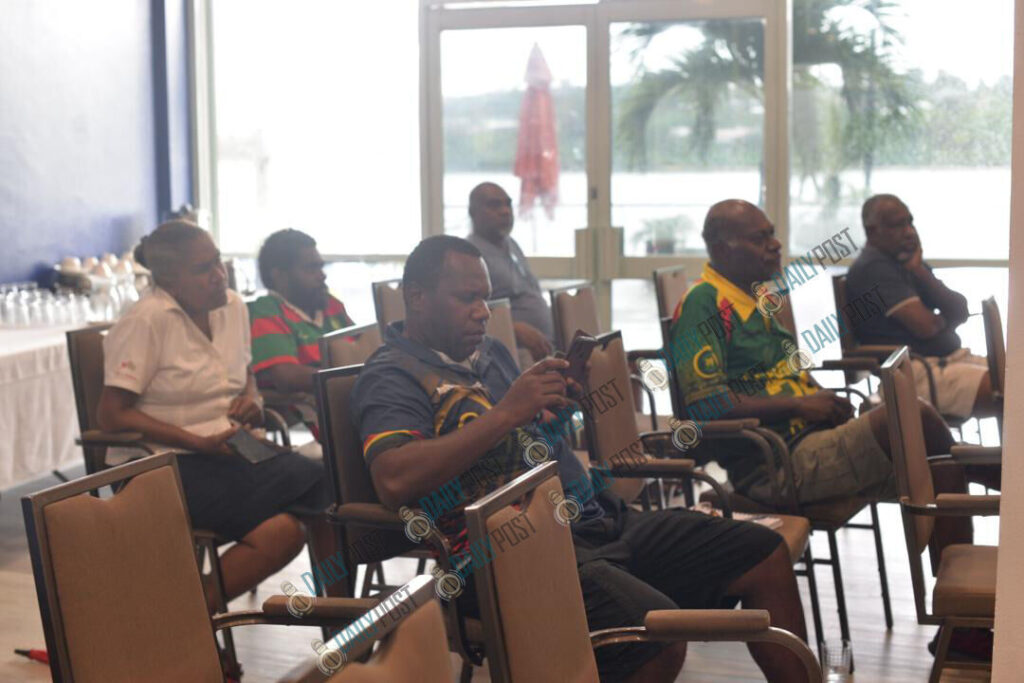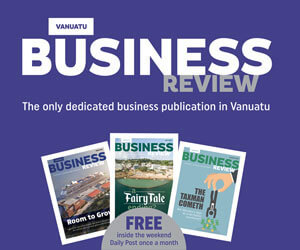Public Land Transport Authority eyes digital payment system
March 22, 2024 11:49 pm | Posted in Business News | Share now TwitterFacebook
By Glenda Willie.

The Public Land Transport Authority (PLTA) is eyeing a digital payment system for public land transport vehicles.
This is in response to enhancing the transportation system to increase efficiency, safety, and sustainability through various applications and technologies.
Since it launched its Database System and Website in 2023, the PLTA office has held discussions with Vodafone to introduce the M-VATU QR Pay, a digitalised mobile payment platform.
Yesterday, the Vodafone M-VATU team carried out their first awareness on this initiative with owners and drivers of public land transports.
PLTA’s Chief Executive Officer (CEO), Reginald Tabi, explained that bus drivers are pushing for higher fares. However, from the Authority’s discussion, they observed that buses are often full and making money. Tabi questioned whether all drivers are giving all the money they earn each day to the owners.
They suggested finding a way to make sure transport owners make up the money for the costs of running their transport businesses. This would help ensure that owning a transport business stays profitable.
An answer to this issue is the introduction of the digital payment system.
He explained that since this is a new initiative some people may oppose it. However, he pointed out that Vanuatu can learn from other countries like Fiji, where it took about 10 years to implement and now operates a similar system.
Alesana Motoutorua, Vodafone’s M-VATU Team Leader also highlighted during their awareness that many public transport drivers are not always honest about how much they earn during their daily running. Despite making good money, some drivers often give only a small portion to the transport owners.
With the introduction of M-VATU QR payment, this method allows drivers to collect fares from passengers by simply scanning a code, ensuring a more transparent and accurate payment process.
Transport owners will not have to worry about mismanagement of the bus earnings. This also promotes improved record-keeping and financial management.
Bus owners will need to register as merchants for M-VATU. So when using the service the passenger will scan the QR code, which will be displayed within the buses, taxis, and other vehicles to transact the bus fare payment.
She noted that this would be more secure and convenient for both the passengers and the transport owners. This platform is user-friendly and not time-consuming.
With this platform also, operators will receive payments directly into their accounts and all transactions happen in real-time. For this to work, passengers will also need to have the M-VATU App so they make their payments through the application.
Vodafone is inviting transport owners to tap into this platform.
According to Ms Motoutorua, Vodafone is ready to start registering the first 50 transport providers. However, they are open to welcoming more drivers to join.
Vodafone held its first awareness and will continue to organise more awareness for transport service providers. They are committed to educating and assisting interested drivers with any questions or concerns regarding this platform.
M-VATU is a digital banking payment solution that allows customers to carry out their financial transactions from their mobile phones.
It has various services including allowing its users to deposit money, withdraw cash, pay bills, save money, and receive money from other countries like Australia, Fiji, and New Zealand. Its users can also buy phone credit and data through it. In some shops, its users can even use it to pay by scanning a code. Even those that have a basic phone, can still use it by dialing *120#.
Meanwhile, CEO Tabi said they would also approach Digicel to carry out a similar awareness based on their digital payment system, so customers can choose either network when making their transaction when this comes into realisation.
He said the Public Land Transport Board would meet with both telecommunications operators and could also invite and collaborate with the government to trial this initiative.










